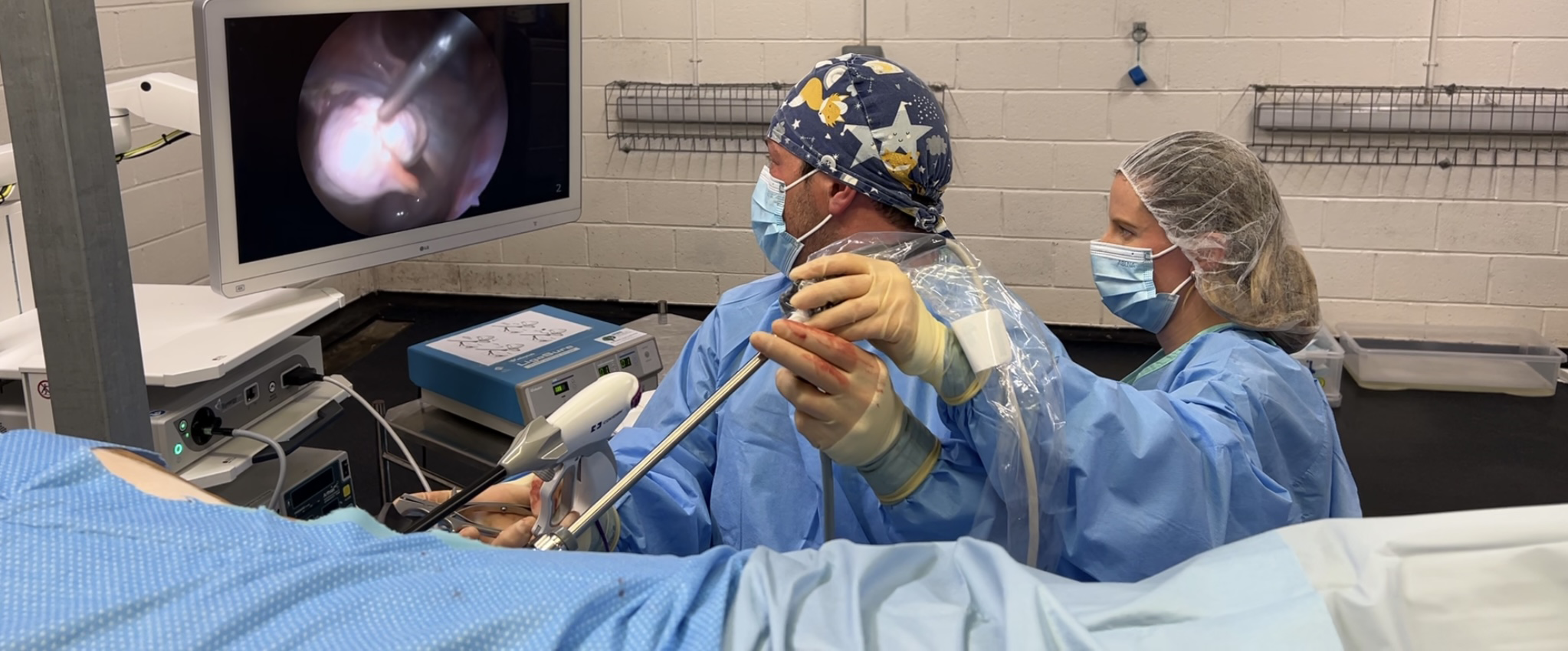What does castration involve?
Most colts are castrated under ‘standing’ sedation.
This involves the administration of a sedative injection and then injecting local anaesthetic into both testicles and the surrounding tissues to ensure pain is not present during the procedure. This is the most cost effective technique and can be performed at most yards and is quicker than a general anaesthetic.
The procedure usually takes around 30 minutes to one hour. Both testicles are removed via separate incisions (cuts) in the scrotum A special piece of equipment is applied to the blood vessels for several minutes before the testicle is removed to minimise bleeding and ‘clamp’ the vessels off. The skin incisions are left open and not stitched to allow draining of any blood and fluid.
In some circumstances it may be necessary for the administration of a general anaesthetic for castration, for example older stallions, some draught breeds, donkeys, unhandled colts or colts where one or more testicles are not yet fully descended/dropped.
Why should I castrate my colt?
Castration reduces or eliminates masculine behaviour which often makes horses more manageable.
At what age should colts be castrated?
We generally recommend castration from six months of age or sometimes as foals prior to weaning. Older stallions (over 4 years of age) may require a different technique, where general anaesthesia may be required.
Generally colts will reach sexual maturity at 15 to 18 months old however some will reach puberty earlier and can therefore successfully cover mares. Care must be taken to separate colts from fillies and mares before they reach sexual maturity to avoid unwanted pregnancy.
What should I do before my colt is castrated?
If you can safely do so, check that two testicles are present.
If your colt does not appreciate your checking (which many don’t) ask your vet to check when they are on the yard. Most colts will have both testicles present at birth, however some may take several months to descend. If both are not present by a year of age they are unlikely to descend and more involved surgery is required for castration.
Are my premises suitable?
We ask that owners have an enclosed safe area to perform standing castration away from other horses. A stable or covered yard with a clean straw bed is ideal.
Ideally the colt should be relatively clean prior to the procedure. The best times of year for castration are when the field conditions are reasonable and when flies are less likely to be an issue. After the procedure the horse/pony will be required to be turned out in a field or pen to exercise and reduce any potential swelling. Sometimes walker exercise will be sufficient.
Does he need to be vaccinated prior to castration?
If your colt is not vaccinated immediate cover for tetanus can be given at the time of castration.
Can my colt still cover mares?
After castration a colt can still successfully cover a mare for approximately four weeks.
Are there complications with castration?
Minor complications may arise and are fairly common.
The main complications are bleeding, localised swelling, infection and exposed tissue.
Your vet will advise on post operative castration care.


